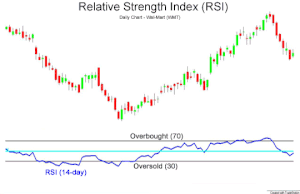
Image via Wikipedia
A lot has been said and written about using various technical indicators to signal buys and sells. However, it is too often that you find speculators trying to have it easy betting on the “one” thing that is guaranteed to work. Once such indicator is the RSI.
RSI, or the Relative Strength Index, is a technical momentum indicator that compares the magnitude of recent gains to recent losses in an attempt to determine overbought and oversold conditions of an asset. It ranges from 0 to 100, an over 70 reading indicates an over-brought condition and a below 30 reading indicates an over-sold situation.
Now, I’m all for using technical indicators as a complement to other stock-picking tools. However if you rely on only indicator, the chances of you losing money is pretty high. Let me illustrate it with an example.
NIFTYBEES is an ETF that tracks the Nifty 50 index, it trades on the NSE. Going through the time-series from Jan-2005 to April-2011, one can get a pretty good handle on how the RSI fared over the market.
The investment strategy was split into ‘long-only’ and ‘long-short’. In the long-only strategy, it was assumed that an investor will buy and accumulate one unit of the NIFTYBEES whenever the RSI indicated an over-sold. When the RSI showed over-brought conditions, the investor would sell his entire portfolio. For the long-short strategy, it was assumed that the investor would accumulate a long position when RSI showed over-sold and accumulate a short position when the RSI showed over-brought. For the purpose of this experiment, over-brought: RSI >= 80 and over-sold: RSI <= 20.
So how did the strategies fare? The ‘long-only’ investor fared better than the ‘long-short’ investor in that he did not lose money (not considering brokerage and cost of funding). The long-short investor would be massively short the market right now. You can look at the spread-sheet on Google docs here: http://bit.ly/iuTno5 and draw your own conclusions.
There are no short-cuts when it comes to investing and technical indicators are no different. Spend time learning different investment styles, adopt one that suites your attitude and be prepared to stick with for the long-term. Robot-style investing is not for humans.

Comments are closed, but trackbacks and pingbacks are open.